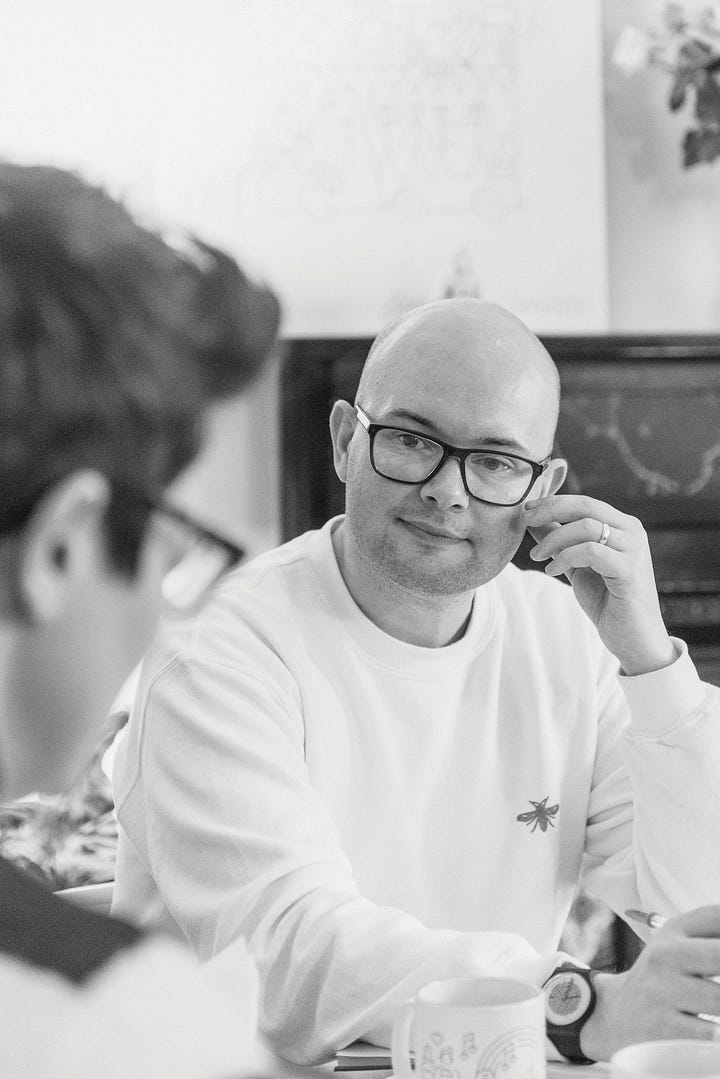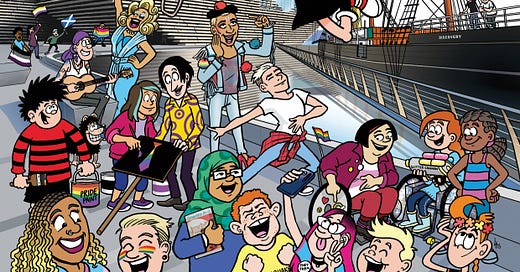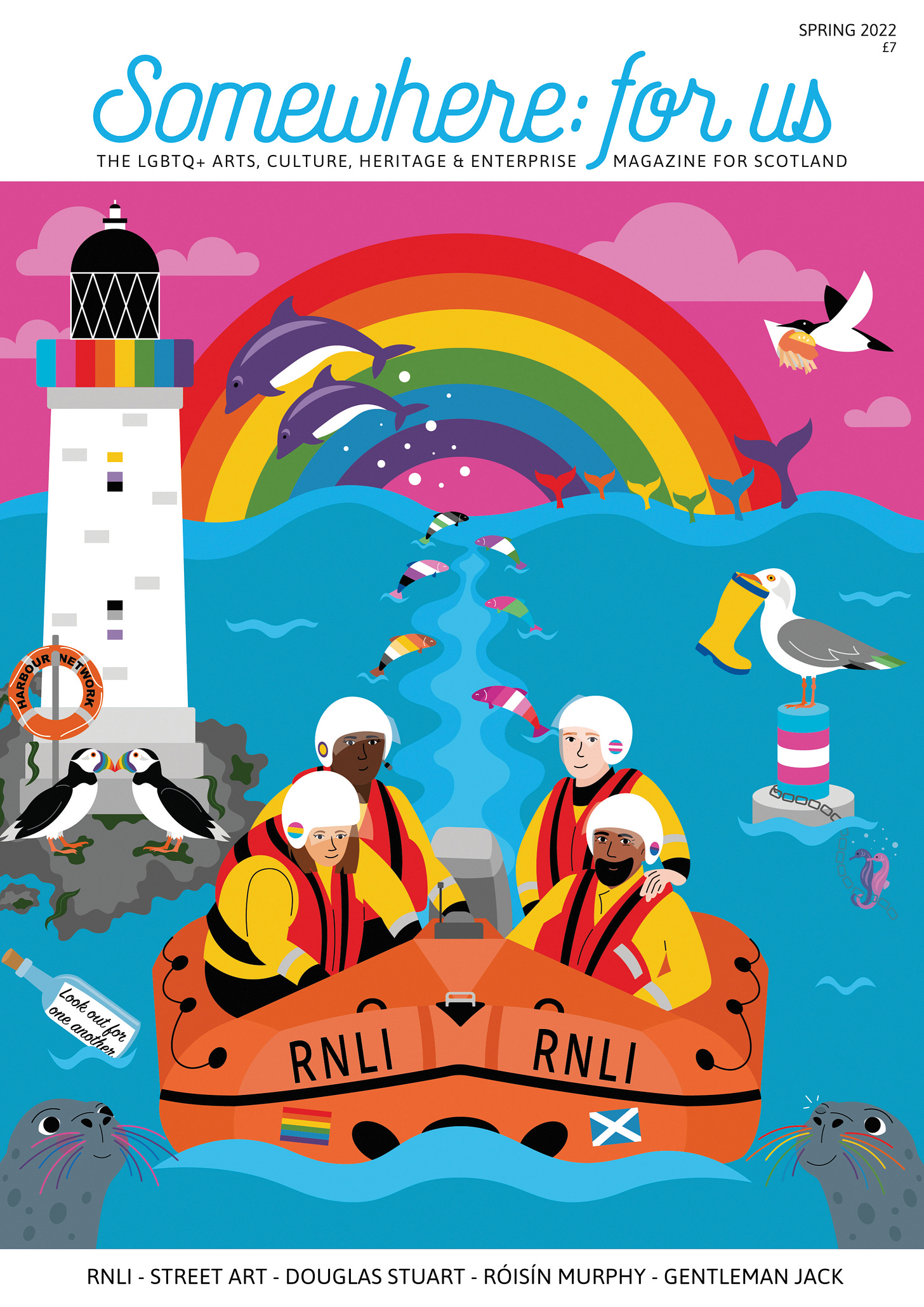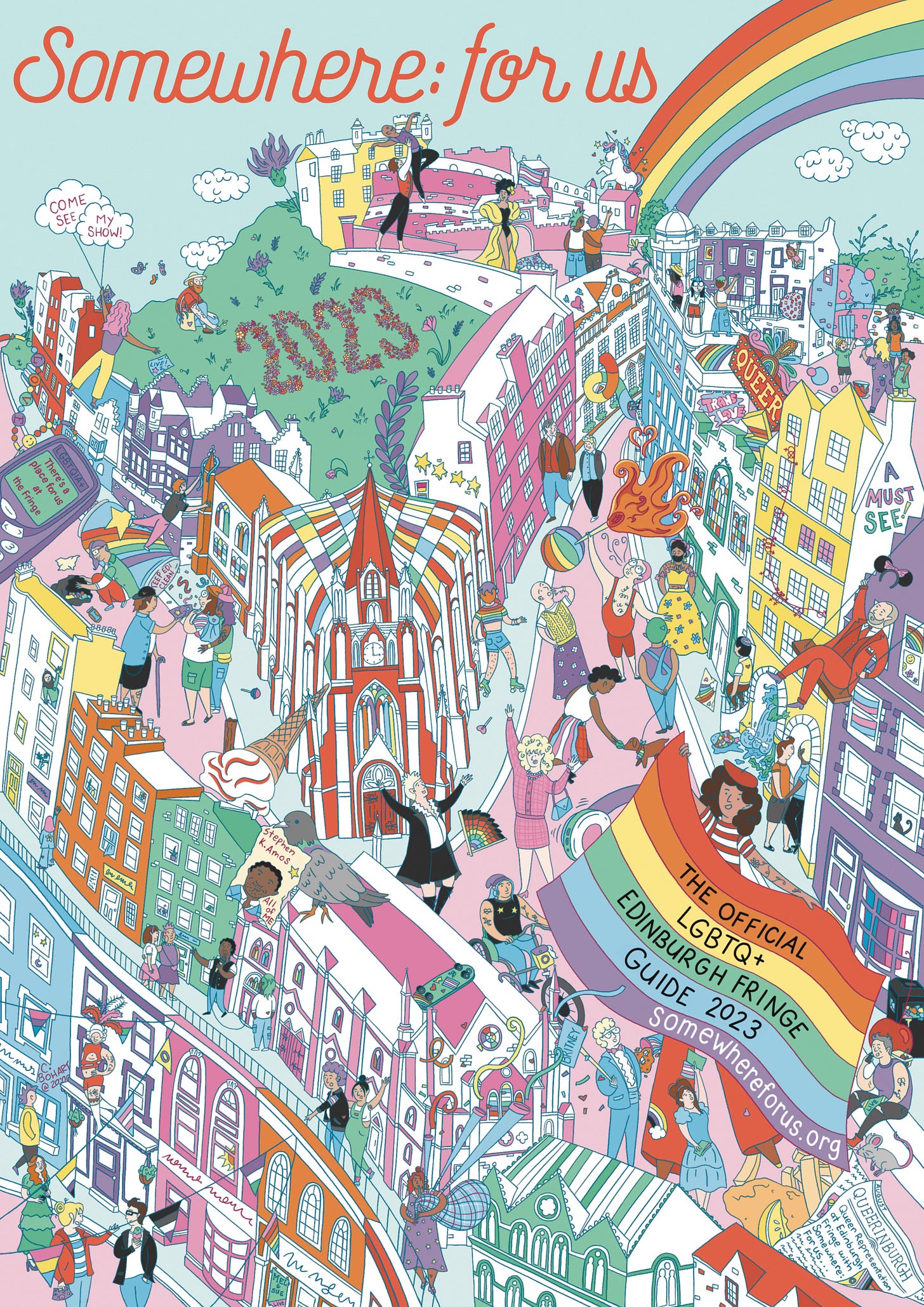DEI is the whole point of magazines
Read about a magazine making a difference to the LGBTQ+ community in Scotland
Hello magazine makers,
From the dipshits at Disney to the ‘merchant bankers’ at Goldman Sachs, corporate America is ditching DEI to keep the crazies happy.
I haven’t seen any magazine publishers board this particular bad-idea bandwagon yet, and while that doesn’t mean they won’t, maybe there’s something different about magazine publishing.
Before you come at me, I know that many of the companies that publish magazines are not as diverse and inclusive as they should be. Our industry still has a lot of work to do to make sure publication staffs and the voices they platform are representative.
However, the modern magazine market relies on a massive mosaic of group affinities: there’s a magazine out there for everyone (even the crazies). The less mass-market magazines become the more diverse the industry’s output.
With that in mind, I’m doing something a little different with this newsletter and re-publishing a feature from issue three of The Grub Street Journal.
It’s a beautiful profile of Scottish LGBTQ+ magazine Somewhere: for us and to be honest the absolute best ‘Fuck you!’ I can think of right now to the Orange Man-Baby and his hateful Maga deathcult.
Slàinte Mhath,
Peter
Want to know how people are making print magazines work in a digital world? Get The Magazine Diaries sent straight to your inbox every week.
A Bundle of Queer Joy
Community connection is essential for any magazine to be successful – but it becomes even more important when that community has been marginalised. Kath Pierce and Thomas Anderson-Thatcher explain how their print publication, Somewhere: for us, is making a difference to LGBTQ+ people in Scotland.
Remember during the first waves of COVID, when postal deliveries were so important to everyone? We all needed to feel that connection with the outside world, with other people… right?
Now imagine you’re a young trans person who hasn’t come out to your parents.
“When you see that envelope land on the doorstep with your magazine inside, you know that’s your connection with your community, a community that your (potentially) unsupportive parents don’t know anything about,” says Kath Pierce, co-founder of Somewhere: For Us (S:fu). It’s why she and fellow founder Thomas Anderson-Thatcher chose to produce a magazine in print.
“We thought it was really important to provide the physical experience of a magazine, an actual physical connection so that people had a space they felt safe. S:fu became a thud of queer joy, anonymously landing through people’s letter boxes.”
A Safe Space
S:fu covers arts, culture, heritage and enterprise for the Scottish LGBTQ+ community.
It launched in November 2020, when the whole of the UK was in lockdown. After the novelty of the first sun-baked lockdown had worn off, and with a bleak Christmas ahead, it had started to get to many people – but, says Kath, LGBTQ+ people were often feeling it hardest.
“During COVID, when we launched the first issue, the LGBTQ+ community was particularly marginalised, and was most likely to suffer in terms of accessing healthcare and through social isolation,” she explains. It provided the compulsion to hit publish as soon as possible.
“We already felt very strongly that LGBTQ+ people needed a magazine… but when the pandemic hit we knew that was the time people needed us the most.”
Kath and Thomas’ awareness of this need had been building for some time. Both committed advocate/activists, they were deeply involved with various groups and networks throughout the UK, but it was after their respective relocations to Scotland – Kath to the Highlands, Thomas to Edinburgh – that a print magazine came to fruition.
A Clear Need
“S:fu was inspired by the really basic desire of LGBTQ+ people to have visible spaces for them,” says Kath. “These spaces just don’t exist, especially up here, away from the city. There was a very clear need for the magazine to become that space.”
At the time, they explain, there wasn’t an LGBTQ+ magazine that spoke to the community in an authentic way “that wasn’t aimed at gay or bi men’’. Thomas adds, “Of course, we really value what everybody else is doing in the LGBTQ+ space and in Scotland itself, but there was nothing family friendly back then.”
Their aim was to create something that everybody from a primary school child to their grandparents could read together. “We thought, how powerful would that be, to create a magazine that is somewhere for us – but somewhere for everyone? And we make sure that in every issue there’s something of interest to everybody on the LGBTQ+ spectrum, including our allies.”
It was important to both of them that S:fu was a print publication, rather than online. As well as creating a physical connection to the community, as mentioned above, they felt that a digital magazine wouldn’t have had the same impact.
“Neither of us is passionate about digital only magazines, and we’re all so oversaturated with online stuff,” says Thomas. “If it hadn’t been print, I don’t think it would have hit the same – this is something you can sit down and escape with, take yourself out of day-to-day life.”
They regard themselves as the ‘guardians’ or ‘stewards’ of S:fu.
“We’re aware that the magazine is a facilitator or a convener of people, a conversation between us and the readers,” says Kath. “Of course, we write and publish this magazine because we both have something to say, but it’s important that we’re simply part of that conversation rather than leading it. S:fu is an organic thing, shaped according to what people tell us they enjoy reading.”
Championing LGBTQ+ Life
Four years on and the magazine is going from strength to strength, with a circulation of 1,000 copies a quarter, and an even bigger readership. The strength of the community is testament to the extensive work Thomas and Kath did in the run up to the first issue.
“We spent a couple of years having real honest conversations with the communities, being part of focus groups, helping charities, helping other people in the creative world… and that’s how we built a following,” Thomas says.
By the time they came to publish the first issue, they had deepened their connections across the UK, and had thousands of followers across their social media channels.
“We connect with our community by being accessible and relatable – because we knew if we were to launch the magazine, people had to believe in us,” says Thomas.
The need to build trust, a pressing issue for many publications in the age of misinformation, is greater still when inaccurate information about LGBTQ+ people is not only widespread, but fuel for anti-LGBTQ+ commentators.


“We take our responsibilities as publishers of content seriously – people need to believe what we’re publishing. They need to know that if we’re publishing news stories, those stories are actually true”.
Although it is “a grim time to be LGBTQ+”, S:fu’s founders have made a conscious decision to adopt a positive outlook and tone.
“We both feel that arts activism is really important – ‘queer joy’ is an act of resistance in itself,” says Kath.
“That’s why in the magazine we don’t avoid the difficult conversations, but we provide a space where LGBTQ+ life is properly championed and celebrated. There is deliberately so much happiness in the mag because, quite frankly, we need it – there is so much crap going on in the real world.” Thomas adds, “Actually, S:fu has been described as a ‘bundle of queer joy’!”
City-wide Impact
These ‘difficult conversations’ include covering the potential rolling back of trans rights in Scotland.
The ‘pride as a protest’ cover tackled this head on, with an illustration solely in trans flag colours showing protests outside the Scottish Parliament. “We were thinking more widely – what impact would the front cover have on display in the V&A Dundee?” Thomas says.
“We thought it was a real opportunity to show that the magazine is an ally, to try and spread the message that trans rights are human rights. We hope it reached people beyond the LGBTQ+ community, helped dispel some of the untruths that people are exposed to, helped them become better supporters for the community.”
To really broaden the reach of this message, Kath and Tom decided to put the ‘pride as a protest’ cover on the back of the Fringe Guide, an A5 print publication that collated and amplified all the queer shows at the Edinburgh Fringe. And it couldn’t have come at a more pertinent time.
2023 had the highest number of LGBTQ+ shows they’ve ever had at the fringe. “But it also had the most anti-LGBTQ+ protests,” says Kath. “There was so much anti-trans rhetoric and openly anti-trans hate speech throughout the event, and that made it all the more important that all 3,500 copies of our guide – and that cover – were distributed across Edinburgh. We were essentially flyering the whole city, which is incredibly powerful.”
The print publication definitely made its way into the hands of some unexpected readers, as Thomas witnessed firsthand. “I was in the Co-op, and I saw a little granny pick up the Guide, smile at the cover and take it away,” he says. “I don’t know what she thought of it when she took it home and opened it… but I’m sure she got something from it. And that’s the impact that we wanted it to have.”
And the impact of their print magazine was underscored when a teenager made a point of coming to find them at the community fair at Pride. “She said, ‘I needed to come and thank you for the magazine,’ and we said, ‘Oh, thanks very much!’,” says Kath. “But then she said, ‘No, really, thank you for educating my parents so that I don’t have to – it’s such a relief for me.’ We both cried when we heard that.”
Find out more about Somewhere: for us at somewhereforus.org
Want to know how people are making print magazines work in a digital world? Get The Magazine Diaries sent straight to your inbox every week.










